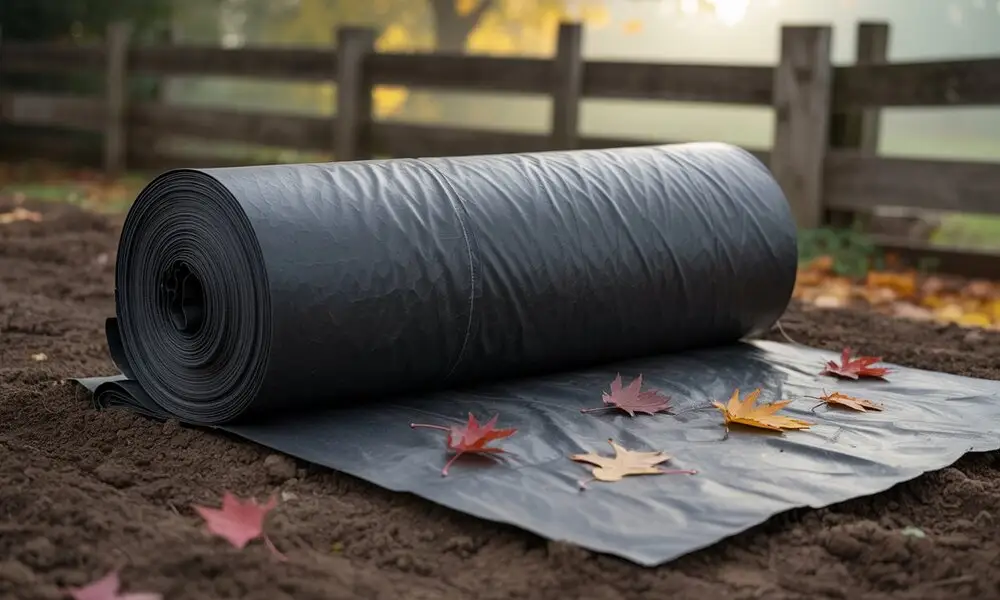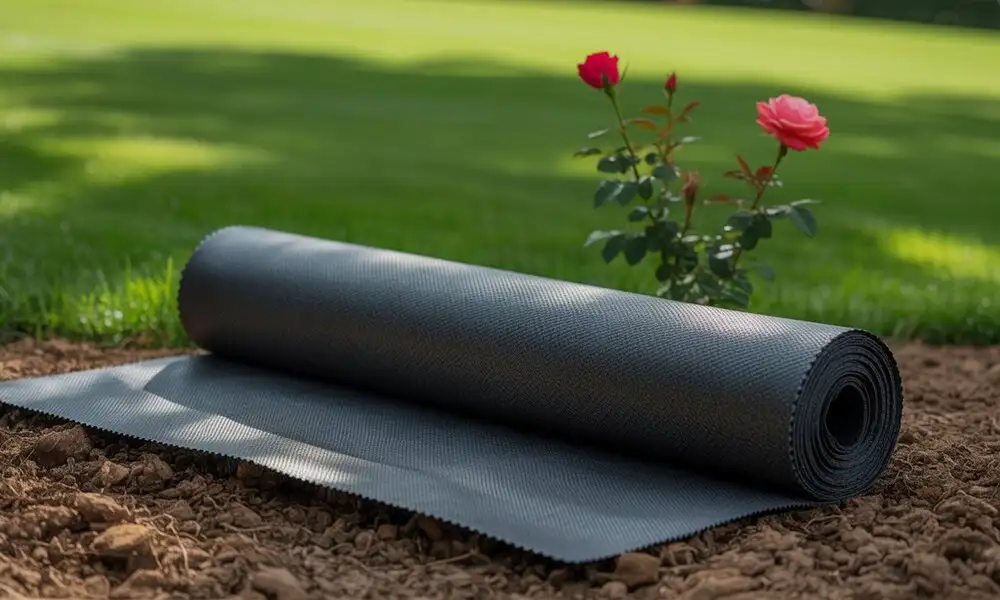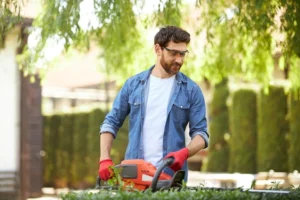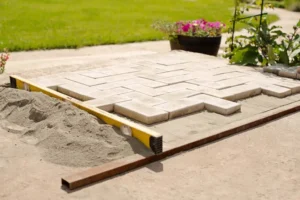If you’ve ever wondered how to lay landscape fabric, you’re in the right place. Landscape fabric also called a weed barrier or landscape fibre is a durable material designed to block unwanted weeds, retain soil moisture, and cut down on yard maintenance. By installing landscape fabric correctly, you can create a healthier, low-maintenance outdoor space that looks clean and well-kept.
In this guide, you’ll learn how to choose the right weed barrier, why it’s important, and discover step-by-step instructions on how to lay landscape fabric with ease. Whether you’re enhancing a garden bed, pathway, or larger landscape project, following these tips will make installing landscape fabric a simple, rewarding task.
Why Install a Weed Barrier?

Installing a weed barrier is one of the simplest ways to keep your landscape neat, healthy, and low-maintenance. By using landscape fabric, you create a protective layer that offers multiple long-term benefits.
Blocks weed growth
A weed barrier stops invasive weeds from breaking through the soil. This reduces constant weeding and helps maintain a clean, polished look in your garden or yard.
Retains soil moisture
By laying landscape fabric, water is allowed to pass through while slowing evaporation. This helps the soil stay moist longer, which is especially useful in hot climates.
Enhances plant health
With fewer weeds competing for nutrients and consistent soil moisture, your plants thrive. Healthy root systems mean stronger growth and vibrant blooms.
Reduces need for chemical herbicides
Since the barrier prevents most weed growth naturally, you’ll need fewer chemicals. This creates a safer, eco-friendly landscape for families, pets, and wildlife.
Best places to use a weed barrier
Weed barriers are most effective in:
- Gardens and flower beds
- Pathways and walkways
- Under mulch or gravel
- Around trees and shrubs
How to Choose the Right Weed Barrier
When it comes to installing landscape fabric, choosing the right type makes all the difference. The right weed barrier not only controls weeds but also supports healthy plant growth and long-lasting results.
Types of landscape fabric
- Woven fabric – Strong and durable, ideal for pathways and areas with heavy foot traffic.
- Non-woven fabric – Allows better water flow, making it suitable for garden beds.
- Biodegradable fabric – Breaks down naturally over time, perfect for temporary projects or eco-friendly gardening.
Factors to consider
Durability & thickness
Thicker fabrics are best when you lay landscape fabric under gravel, stone, or mulch, while thinner ones suit garden beds.
Breathability
Choose a fabric that allows air and water to reach plant roots. Good breathability prevents soil compaction and keeps plants healthy.
UV resistance
For areas with direct sun, select a weed barrier with UV protection. This prevents early breakdown and ensures the fabric lasts longer.
Intended use
- Garden beds → non-woven or biodegradable fabric.
- Pathways & walkways → woven fabric for extra strength.
- Around shrubs & trees → durable fabric with good water flow.
Expert tip
Always match the barrier type to your specific project. A little planning before installing landscape fabric ensures better weed control, healthier plants, and long-term success.
You may read Does Landscaping Increase Home Value?
How to Lay Landscape Fabric in Five Easy Steps

Weeds can quickly take over a beautiful yard, but using landscape fabric is an easy and effective way to keep them under control. It blocks weed growth, allows water to flow through, and reduces the need for constant maintenance. Follow these five simple steps for laying landscape fabric the right way.
Step 1: Prepare the Area
Start by thoroughly clearing the area where you’ll be using landscape fabric. Remove existing weeds, grass, rocks, and other debris. Smooth out the soil with a rake and make sure the ground is level. A flat surface ensures the fabric lays properly and prevents gaps where weeds could grow.
Step 2: Measure and Cut the Fabric
Unroll your fabric across the space and measure carefully. Cut it to fit the shape of your landscape, leaving an extra 6–8 inches around the edges for overlap. When covering larger areas, overlap each section by at least 2–3 inches to prevent weeds from finding a path through the seams.
Step 3: Lay Down the Fabric
Once cut, begin laying landscape fabric over the prepared soil. If your fabric has a shiny or textured side, place it facing up according to the manufacturer’s instructions. Make sure it sits flat against the ground without folds or wrinkles. For planting beds, cut “X” shapes into the fabric where plants will go, folding back the corners before planting.
Step 4: Secure with Staples or Pins
Anchor the fabric firmly using landscape staples or garden pins every 8–12 inches along the edges and across the middle. This keeps the material from shifting during wind, watering, or when adding mulch. Pay extra attention to securing corners and seams for maximum weed protection.
Step 5: Cover with Mulch, Gravel, or Rock
Finally, cover the fabric with 2–3 inches of mulch, gravel, or decorative rock. This not only hides the fabric but also protects it from sunlight and wear. A proper covering ensures the fabric lasts longer while giving your yard a polished, professional finish.
When to Call a Professional for Laying Landscape Fabric
Laying landscape fabric may seem simple, but doing it right makes all the difference in keeping weeds out and protecting your outdoor investment. Many homeowners try it themselves, only to run into issues like fabric tearing, poor drainage, or weeds growing back through gaps.
Signs You Should Call a Professional
- Uneven ground preparation – If the soil isn’t graded properly, the fabric won’t sit flat and weeds can push through.
- Large or complex areas – Slopes, tree roots, and oddly shaped spaces make installation tricky.
- Drainage concerns – Professionals know how to install fabric without blocking water flow.
- Long-term durability – DIY jobs often need replacing sooner; expert installation lasts longer.
Why Choose Lakota Design Group
At Lakota Design Group, we bring over 49 years of experience in transforming outdoor spaces. Our team ensures landscape fabric is laid with precision, protecting your garden beds, walkways, or artificial turf installations. Beyond just weed control, we integrate fabric installation into a complete landscape design plan that enhances the beauty and health of your property.
- Expert preparation for lasting results
- Seamless integration with plants, turf, or stonework
- Professional project management from start to finish
Final Thoughts on Laying Landscape Fabric
Laying landscape fabric looks simple, but proper installation is key to preventing weeds and ensuring lasting results. Clear the area, level the soil, and allow for drainage before securing the fabric. Overlap seams and anchor edges tightly for best protection. For larger or complex spaces, professional installation ensures durability and a flawless finish. At Lakota Design Group, we deliver expert results as part of our complete landscape services. Protect your yard the right way contact Lakota Design Group today!
FAQs
1. What is the proper way to lay landscape fabric?
Start by clearing weeds and debris, level the soil, and add a layer of mulch or gravel on top after securing the fabric with landscape pins. Always overlap seams by 6–8 inches.
2. Should landscape fabric go under soil or mulch?
Landscape fabric goes directly over the soil and under mulch, gravel, or decorative rock to block weeds while still allowing water to drain.
3. How do I keep landscape fabric from moving?
Use landscape staples or pins every 8–12 inches along the edges and across the surface to hold it firmly in place.
4. Can I put landscape fabric under artificial turf?
Yes. Installing landscape fabric beneath turf prevents weed growth and adds an extra layer of stability and drainage support.
5. How long does landscape fabric last?
High-quality landscape fabric can last 5–10 years or more, especially if installed by professionals and covered properly with mulch or stone.





